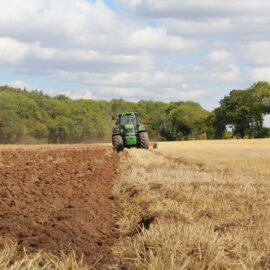

This article is an excerpt from the Shortform book guide to "I Contain Multitudes" by Ed Yong. Shortform has the world's best summaries and analyses of books you should be reading.
Like this article? Sign up for a free trial here.
When do babies develop an immune system? What factors influence the health of a baby’s immune system?
According to Ed Yong, your immune system begins forming earlier than you may think—in fact, the health of a baby’s immune system is impacted during the process of birth. In I Contain Multitudes, he explains the role of microbes in the development of a baby’s immune system.
Read on to learn more about how babies’ immune systems form, according to Yong.
A Baby’s Immune System & the Microbiome
When most people think of microbes, the first things that come to mind are disease-causing germs or healthy probiotic yogurts. We go about our lives largely unaware of the trillions of microbes on every surface and throughout our bodies. In his debut book, science journalist Ed Yong explores the mysterious and fascinating world of microbes. In this article, we’ll specifically explain how microbes contribute to the early development of humans through our immune system. According to Yong, a baby’s immune system is affected by to key factors: vaginal births and breastfeeding, which is when microbes establish immunity.
The Role of Vaginal Births
During a vaginal birth, babies inherit an entire microbiome (a community of microbes) from their parent as they contact millions of bacteria in the birth canal. Yong writes that a baby’s immune system is naturally suppressed during the infant’s first weeks of life so that these beneficial microbes can colonize the baby’s body and provide instructions to immune cells about what microbes they should respond to. Yong even argues that this phenomenon might explain why C-section babies are more likely to develop allergies, asthma, obesity, and other conditions later in life (since these conditions are correlated with abnormal microbiomes).
(Shortform note: Although C-section birth is associated with a higher risk of allergies and asthma in children, research also shows that the risk of asthma decreases if the child’s microbiome recovers during their first year of life. The most reliable and safest strategy for supporting the baby’s microbiome is breastfeeding, but scientists are also developing new techniques to transfer beneficial microbes to infants. These include transferring fecal or vaginal microbes from the parent and administering probiotics.)
The Role of Breast Milk
Yong also describes research showing that breast milk contains dozens of varieties of human milk oligosaccharides (complex sugars called HMOs) that nourish the bacteria in a baby’s gut, impacting the baby’s immune system.
(Shortform note: Although Yong doesn’t explicitly define his use of the word “gut” throughout the book, it generally refers to the entire gastrointestinal system, including the stomach, large intestine, small intestine, and rectum.)
Yong writes that since humans can’t digest HMOs and turn them into energy, this suggests that HMOs in breast milk solely feed bacteria called Bifidobacteria (Bifs). Fed by the HMOs, Bifs multiply in the gut and then tell cells in the baby’s gut to form essential proteins. Bifs also stimulate the production of anti-inflammatory cells in the baby’s immune system, which are required for long-term immune system activities.
(Shortform note: The growing research on the complexity of human breast milk and its relationship to the microbiome is contributing to the decreased popularity of manufactured baby formula in recent years. The first baby formula was invented by the company Nestle in the 1870s, and researchers have been tweaking it ever since to try to replicate human breast milk. Because of wide-scale marketing and the growing appeal of affordable and easy-to-use baby formula, only 25% of women were breastfeeding their newborns in the US in the 1970s. Today, there are more strict requirements for baby formula, but many health institutions advocate for breastfeeding alone for the first six months because of its unique benefits.)
Although everyone’s microbiome continues to develop throughout their life based on many factors like genetics, what they eat, who they live with, and where they live, Yong suggests that the birthing process and breastfeeding are likely crucial to the immune system’s initial calibration.
(Shortform note: Yong’s key point is that early exposure to microbes (or lack thereof) shapes the microbiome and the baby’s immune system in the long term, but environmental factors like sleep deprivation and chronic stress also have the power to weaken the immune system. In Why We Sleep, Matthew Walker discusses simple strategies for getting quality sleep like keeping a consistent sleep schedule and lowering the bedroom temperature.)

———End of Preview———
Like what you just read? Read the rest of the world's best book summary and analysis of Ed Yong's "I Contain Multitudes" at Shortform.
Here's what you'll find in our full I Contain Multitudes summary:
- A deep dive into the mysterious and fascinating world of microbes
- How commercial probiotics have oversold health benefits
- How modern sanitation practices are harming us






